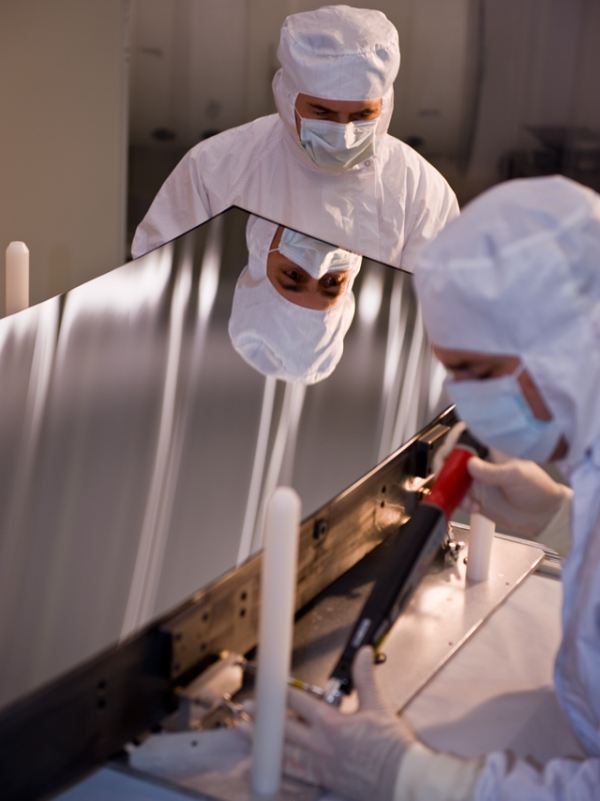The two main mirrors, each measuring 1.5 x 0.5 meters,
were produced by Sagem’s Reosc unit in Saint-Pierre-du-Perray,
near Paris. They use a silicon carbide substrate designed
by Astrium and manufactured by the company Boostec.
Astrium will now integrate these mirrors at their plant
in Toulouse. The two mirrors are aligned on the instrument’s
main structure, also made of silicon carbide, along with
another dozen mirrors, to form two complete telescopes.
These are the largest optical quality silicon carbide
space mirrors built to date in Europe. The surface is
polished to a fineness of only five angstroms, and an
accuracy of 10 nanometers – an impressive performance
for such large mirrors. Qualified to operate at temperatures
down to -175°C , they have a reflecting optical treatment
with unprecedented uniformity for such a large optical
part.
Gaia’s primary mirrors have a highly aspherical
shape, which was another daunting technological challenge.
Their production required the construction of a special
test bench using exceptionally large and precise holograms.
Because of these high-precision mirrors, Gaia will be
able to draw up a map of the sky with unequalled quality.
It was designed to determine the distances, movements
and magnitudes of more than one billion celestial bodies,
to an accuracy 100 times greater than its predecessor,
Hipparcos. These measurements will be used by to refine
the models about the formation of our galaxy, to discover
thousands of extra solar planetary systems, and to carry
out new tests on the theory of general relativity.
Partner of major space programs, Sagem develops and produces
very-high performance optical and electronic sensors for
both scientific applications and Earth observation satellites,
including the James Webb Space Telescope, Hipparcos, Helios,
Meteosat, Spot and the follow-on Astro Terra versions,
and, most recently Svom.
